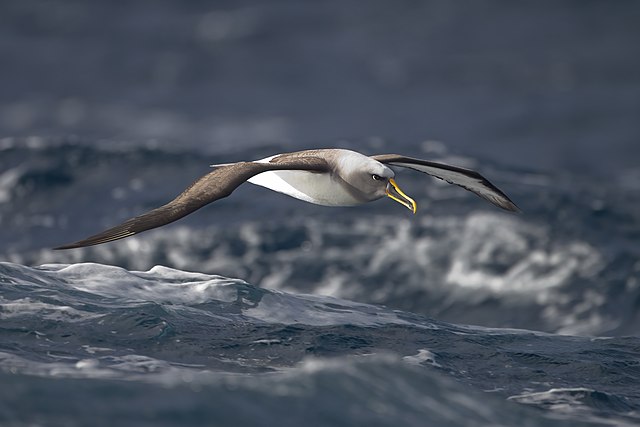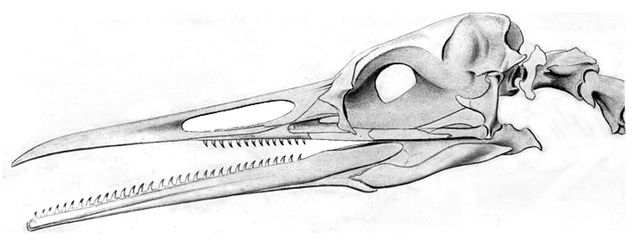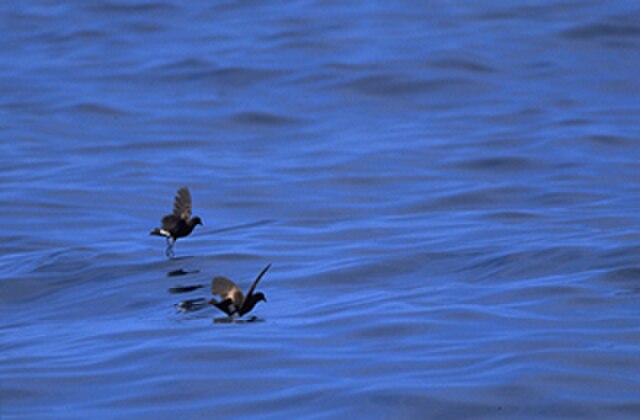Procellariiformes is an order of seabirds that comprises four families: the albatrosses, the petrels and shearwaters, and two families of storm petrels. Formerly called Tubinares and still called tubenoses in English, procellariiforms are often referred to collectively as the petrels, a term that has been applied to all members of the order, or more commonly all the families except the albatrosses. They are almost exclusively pelagic, and have a cosmopolitan distribution across the world's oceans, with the highest diversity being around New Zealand.
Procellariiformes
Pterodroma macroptera from Godman's Monograph of the Petrels, 1907–1910
The southern royal albatross is one of the largest of the Procellariiformes.
The white-faced storm petrel moves across the water's surface in a series of bounding leaps.
Seabirds are birds that are adapted to life within the marine environment. While seabirds vary greatly in lifestyle, behaviour and physiology, they often exhibit striking convergent evolution, as the same environmental problems and feeding niches have resulted in similar adaptations. The first seabirds evolved in the Cretaceous period, and modern seabird families emerged in the Paleogene.
The sooty tern is highly aerial and marine and spends months flying at sea, returning to land only for breeding.
The Cretaceous seabird Hesperornis
Cormorants, like this double-crested cormorant, have plumage that is partly wettable. This functional adaptation balances the competing requirement for thermoregulation against that of the need to reduce buoyancy.
Wilson's storm petrels pattering on the water's surface








